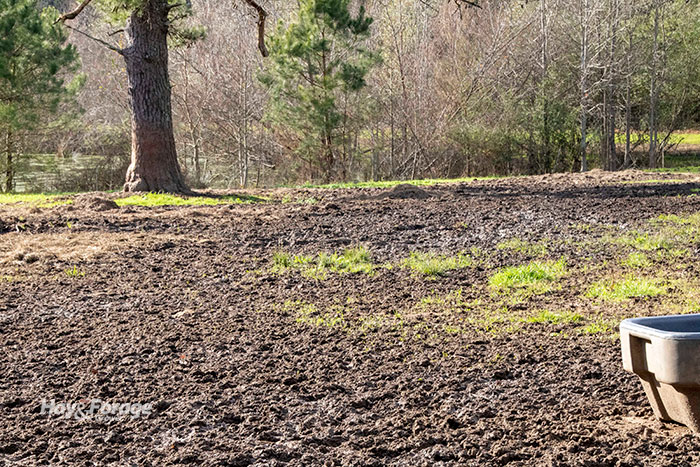
At some point every winter or spring, feeding hay to pastured cattle is going to result in the creation of mud.
Mud can have a profound impact on animal stress and productivity, according to Jeremy Kichler, an agriculture agent in Colquitt County with the University of Georgia (UGA) Extension.
“When cattle have to walk through mud, it raises their energy demand,” Kichler notes. “However, the cattle may actually eat less because walking in mud requires more effort to obtain feed and water. Over time, mud can build up on cattle, causing their energy requirements to further increase in order to keep warm.”
In a recent UGA Extension forage team blog, the agriculture agent cites research showing that a mud depth of 4 to 8 inches reduced dry matter intake of cattle by 8% to 15% compared to dry conditions. One foot of mud or more resulted in up to a 30% drop in feed intake.
With mud raising the cattle’s nutrient demand but also limiting intake, animals will lose weight, and their reproductive performance suffers as well.
Mud mitigation
Kichler offers the following recommendations to help keep mud issues to a minimum:
Avoid overgrazing: Rather than offer cattle extended time periods on pasture when soil conditions are wet and plant growth is slow, designate a smaller sacrifice area where animals can be confined and fed. Locate the area on higher ground or on a well-drained soil. Ensure that any runoff is away from bodies of surface water.
Feed hay strategically: When feeding in a wet, muddy sacrifice area, use lower quality hay so that the hay wasted can be used for bedding or improved footing around the hay feeder. Every couple of days, offer higher quality hay.
Construct a heavy-use pad: Gravel or concrete can be used to provide a solid surface for feeding areas. This is a more expensive option, but cost sharing is sometimes available through the Natural Resources and Conservation (NRCS) office.
Rotate and distribute hay: Faster movement of cattle and rolling hay out in different locations helps to distribute manure nutrients and keeps cattle off the area for an extended period. Be mindful that more hay waste will likely occur with this strategy.
Fence line feed: Feeding along fences reduces field traffic and feed waste. Again, gravel or concrete can be used to keep a mud hole from forming.

